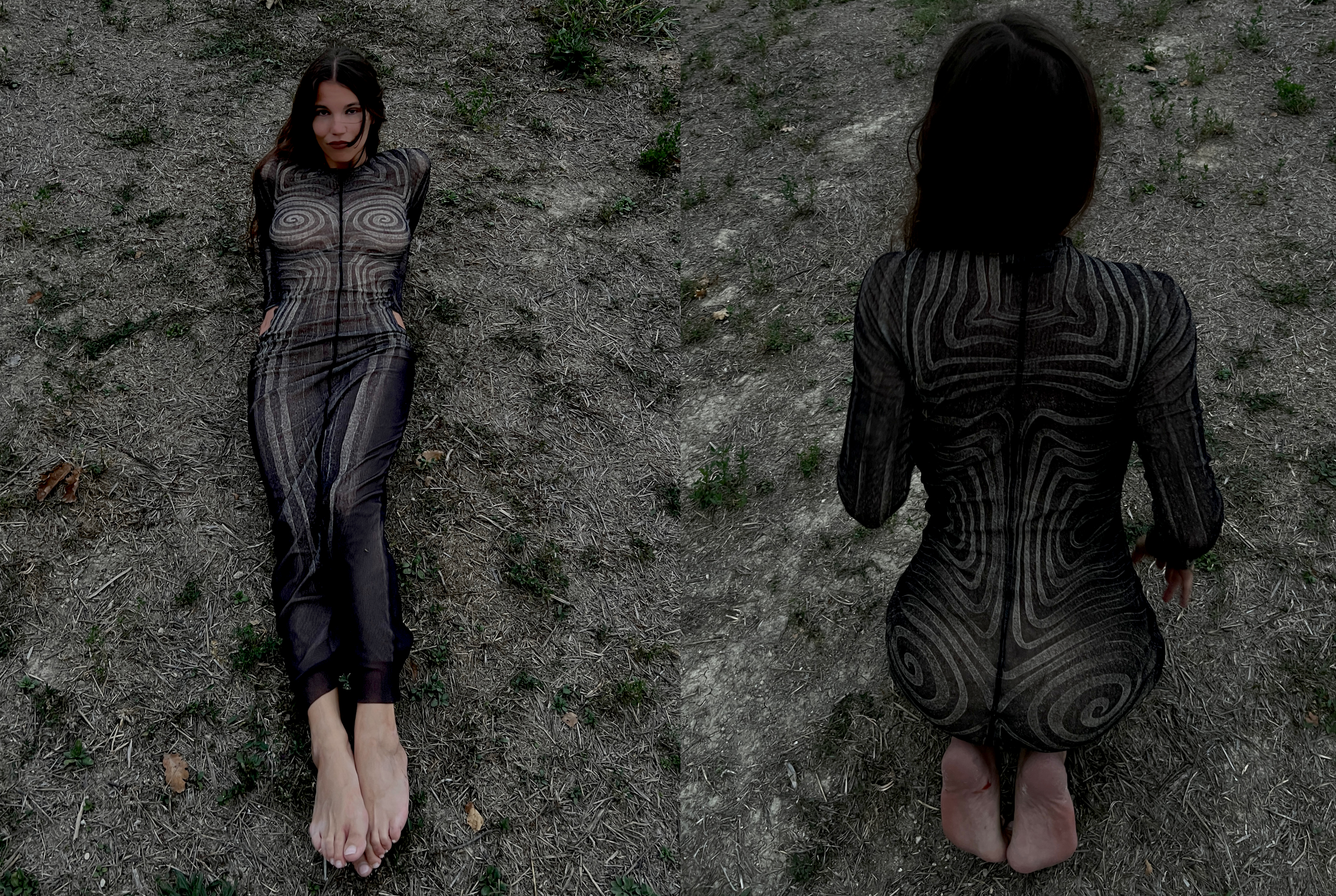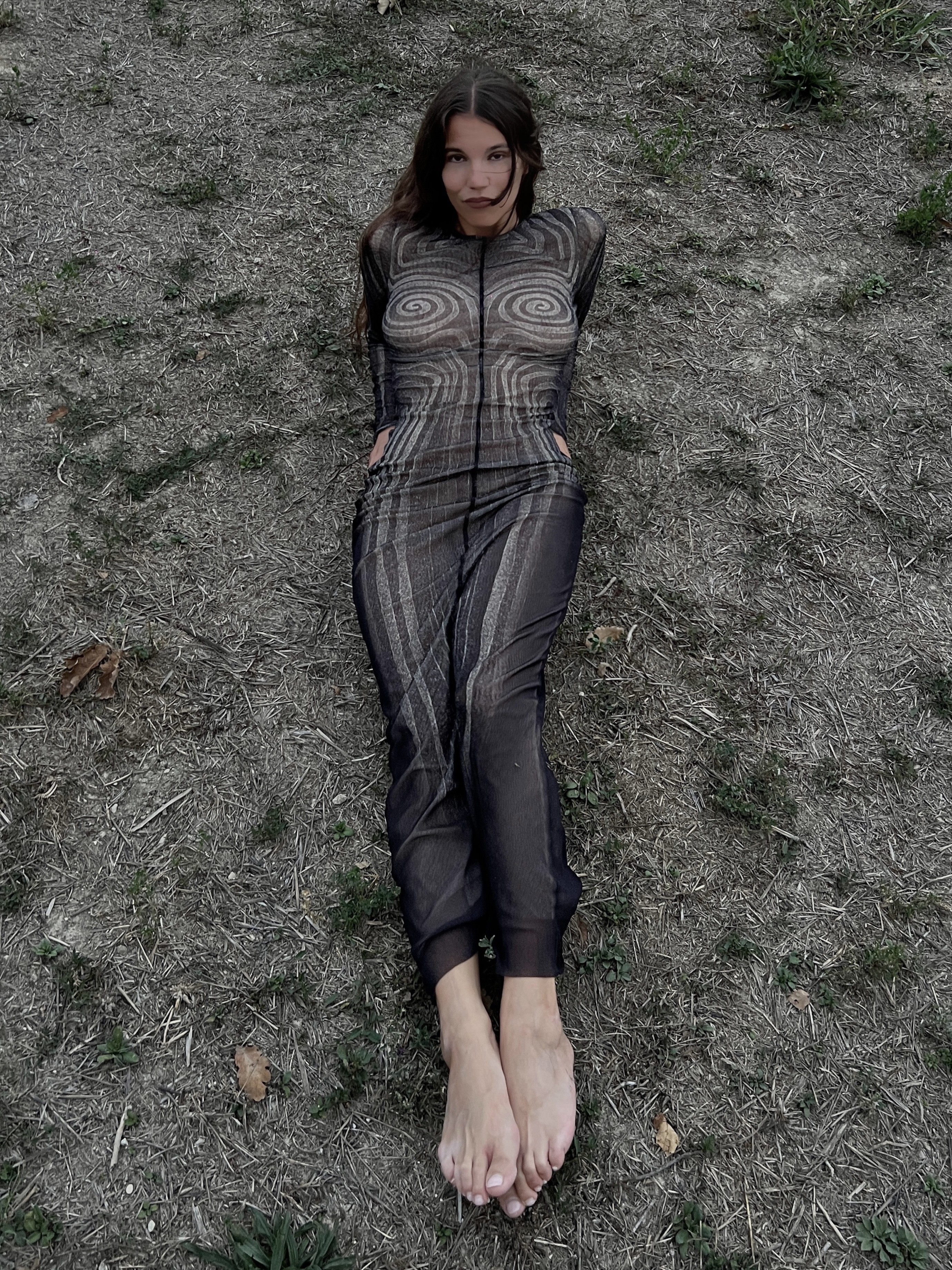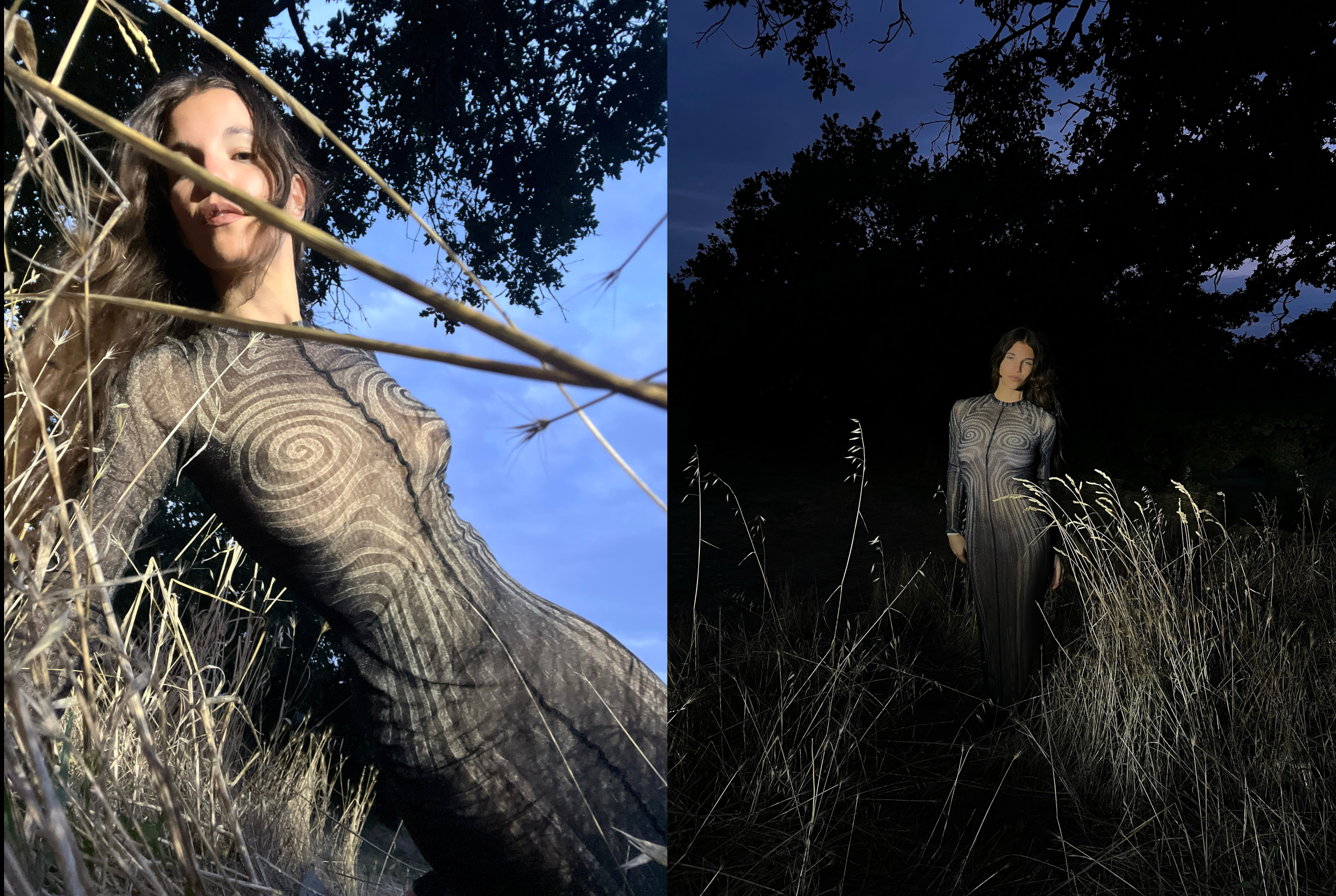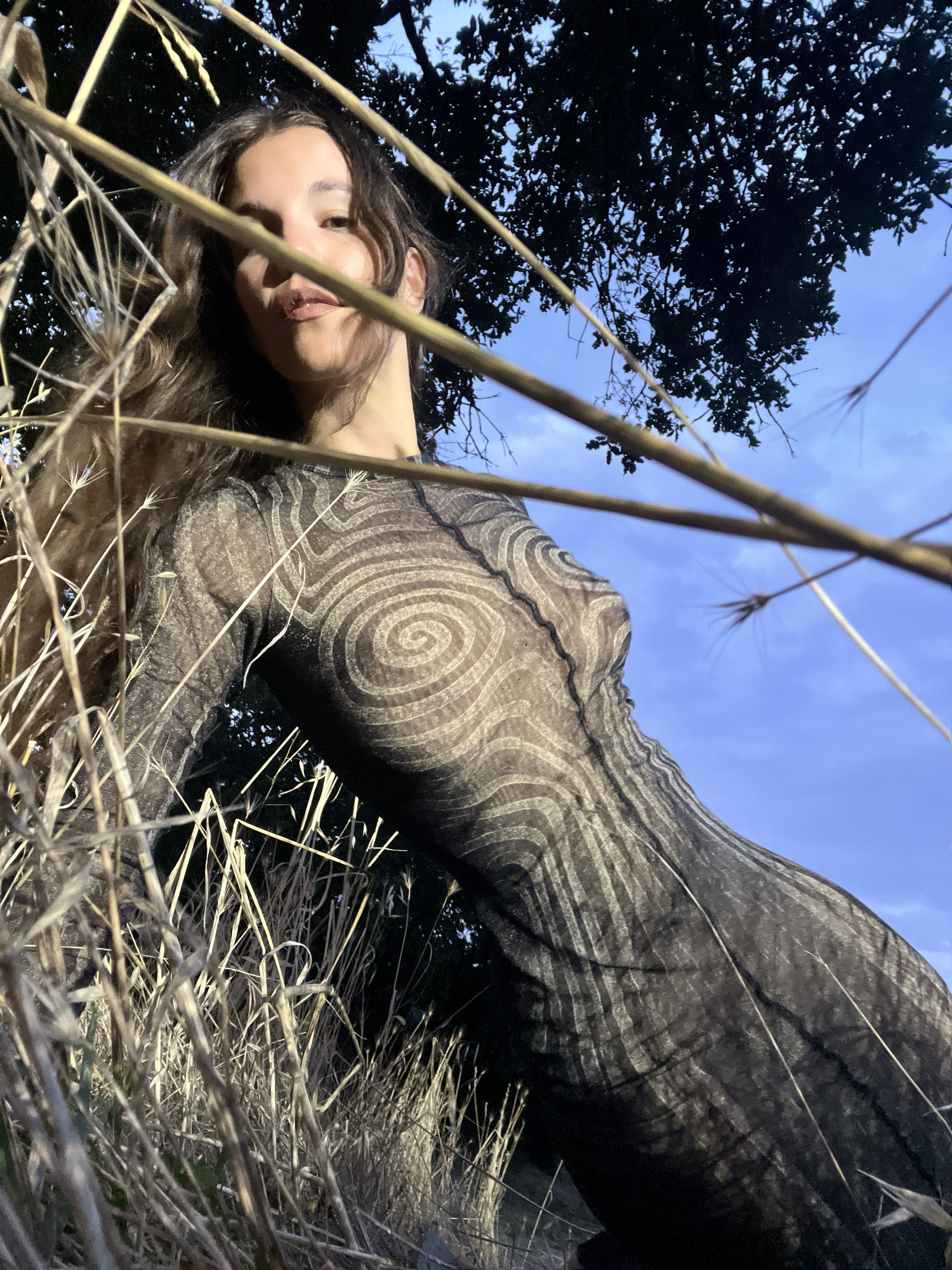In Jean Paul Gaultier, Elaine becomes an echo of his legendary theatricality.
His Into the Woods collection once staged couture as folklore and fantasy, and in these images Elaine reopens that door.
The spirals printed on her dress resemble the rings of a tree, mapping time, memory, and continuity.
The garment clings to her form like bark to a trunk, tracing not just her body but the life of the forest itself.
Photographed at dusk, half concealed by shadow, she becomes apparition.
The light isolates her like a figure on stage, yet she remains deeply rooted in the terrain around her. The tension between couture’s drama and the earth’s silence is where her power lies. She doesn’t mimic Gaultier’s vision; she extends it—proving that the woodland can still be a theatre for couture, and the muse a character drawn from its myths.
Her strength lies in restraint: she does not overwhelm the setting but lets it speak through her. In the silence of her gestures, fashion becomes ritual, her body a vessel for continuity between past and present, man-made and natural, dream and reality. To watch Elaine in the woods is to rediscover why designers, season after season, return to this terrain: because in its shadows and still waters, fashion finds its most enduring mirror.
Elaine is not simply in the forest—she is of it. She is its reflection, its rhythm, its voice.
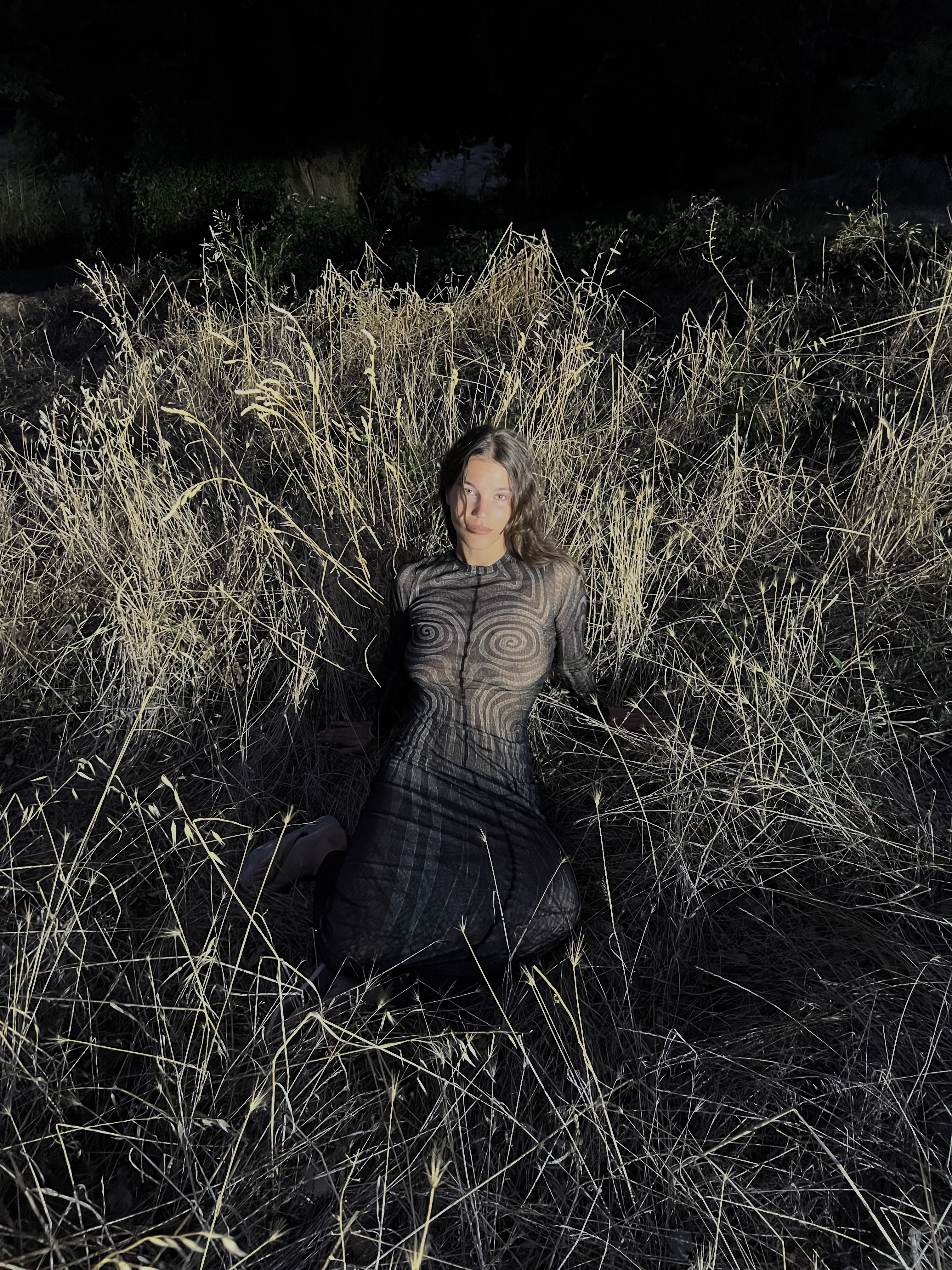
With Ganni, Elaine turns the page and offers another voice.
She did not dress in full looks or layers of prints; she allowed a single element—the shoes—to become the entire vocabulary of interpretation. In that choice lies her vision: that footwear is not accessory but anchor, the point where the body meets the ground, the gesture that decides how one moves through the world.
In the images, Elaine walks the uneven soil, the shoes catching against dry grasses, slipping into earth hardened by heat, brushing the edges of shadow. Each step becomes choreography, improvisational yet intentional, echoing Ganni’s bohemian ballerina spirit. The lightness and freedom often expressed through dresses and volumes are here distilled into stride, into rhythm, into contact.
The decision to use only shoes strips fashion down to essence. The look is not about clothing draped on the body but about presence carried in movement. It is radical in its simplicity: proof that a muse can embody a brand not through excess, but through subtraction. Elaine demonstrates that Ganni’s playful femininity—the balance of fragility and strength, grace and imperfection—can be communicated in how one steps, pauses, turns.
Shoes, in this reading, become instruments of narrative. They carry the tension between grounding and flight, between weight and levity. They allow Elaine to become both dancer and wanderer, figure of rehearsal and figure of myth. In her, Ganni’s ethos is translated into bare movement: no performance, no costume, only the quiet strength of steps pressed into soil.
Elaine’s Ganni is not ornamental; it is elemental. A story told in footprints, in the sound of shoes on earth, in the silence of dusk.

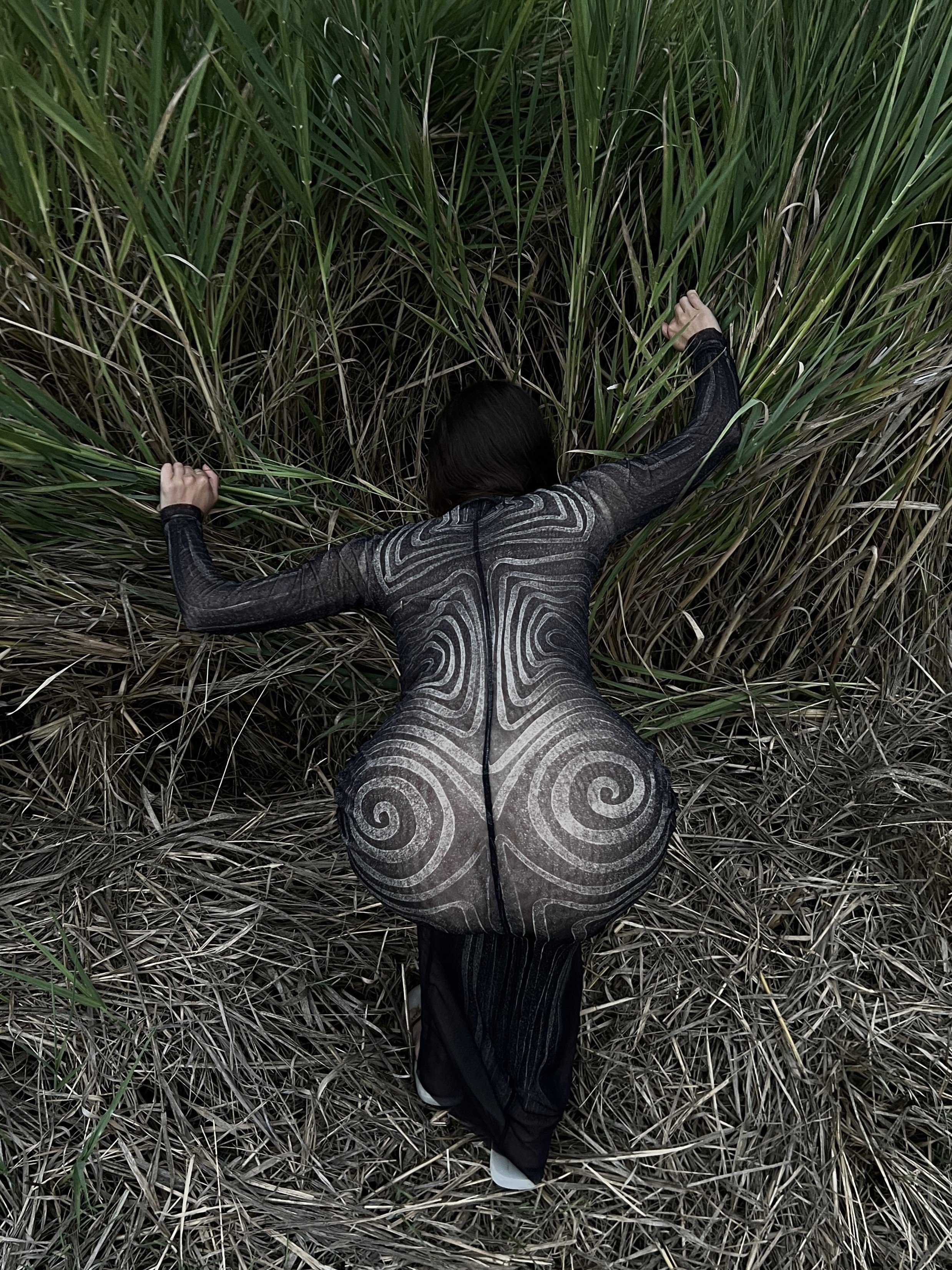
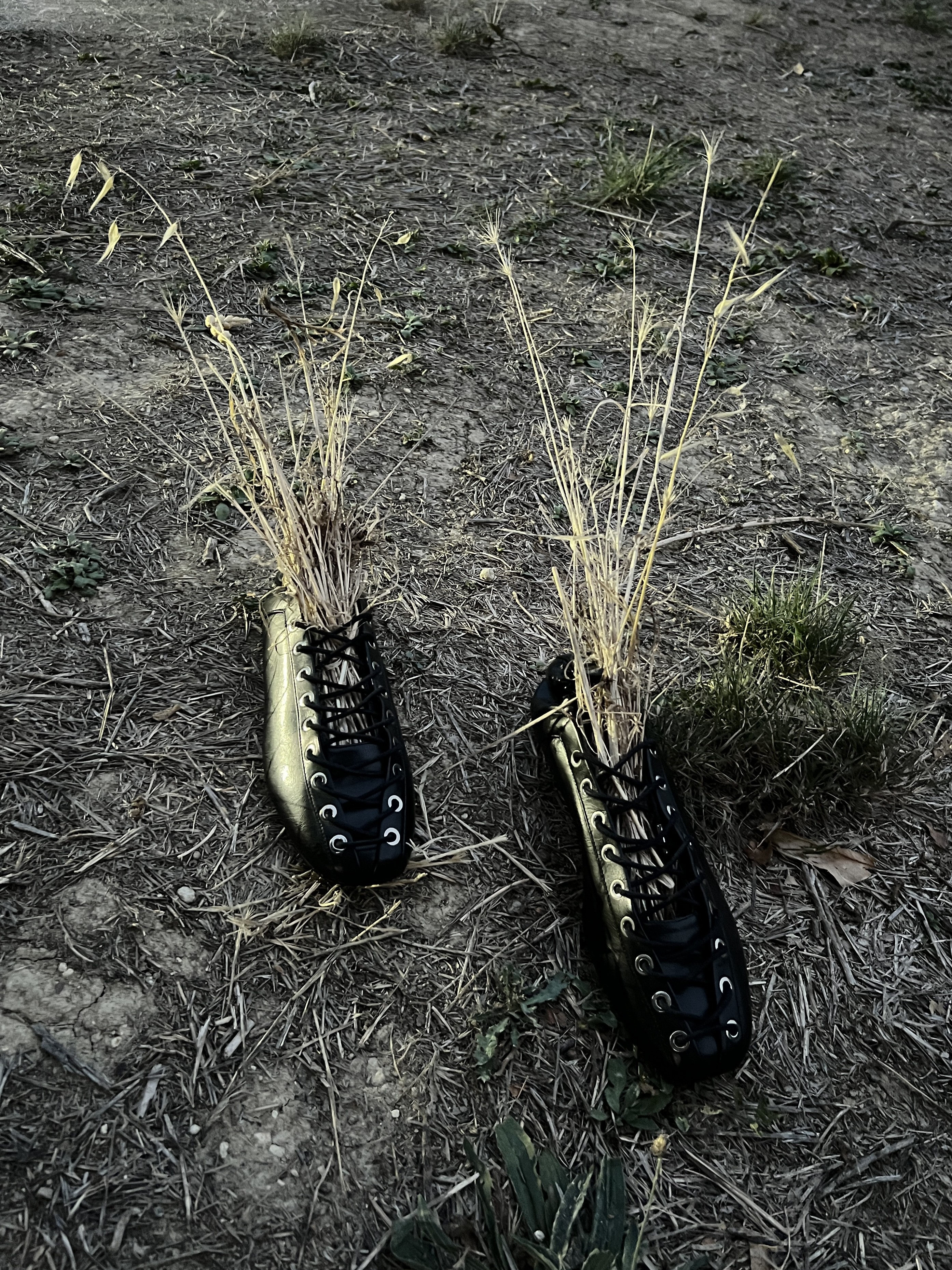
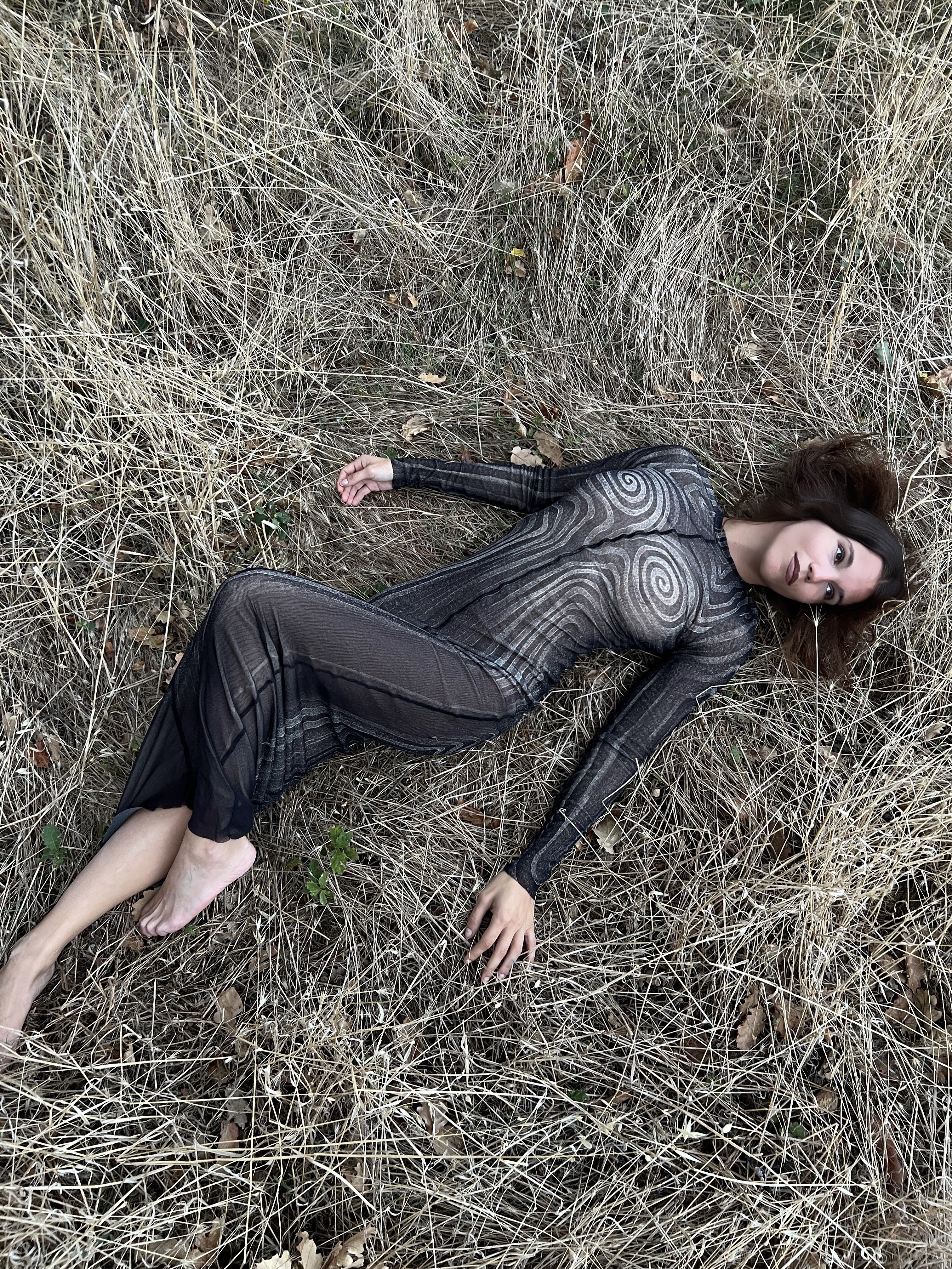
-
Available Size
-
Thanks!
-
Thanks!
- FR - 36
-
-
Available Size
-
Thanks!
- FR - 36
-
-
Available Size
-
Thanks!
- S
-
Thanks!
-
Thanks!
-
